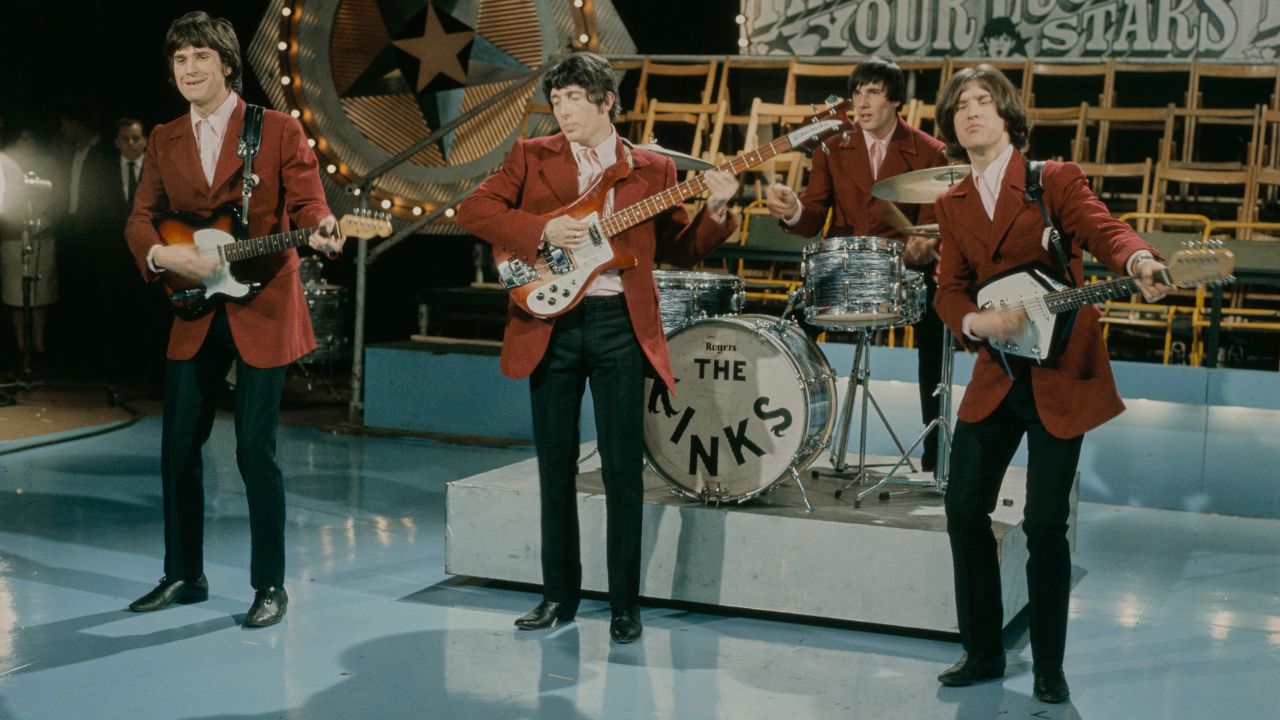Nevermore: What Doesn't Kill

Originally published in Guitar World, September 2010
Five years and three major illnesses since their last album, Nevermore return with The Obsidian Conspiracy. Jeff Loomis reveals how the group survived adversity to come back stronger than ever.
When asked why Nevremore took five years to release the follow-up to 2005’s This Godless Endeavor, guitarist Jeff Loomis shakes his long blond mane and smiles. Patiently, he relates the mishaps and shake-ups that the progressive metal group has endured over the past decade. As Loomis explains, the fact that Nevermore recently released their most structured, accessible and well-received album, The Obsidian Conspiracy, is practically a miracle.
“We came really close to breaking up after we finished touring for This Godless Endeavor,” he says. “We couldn’t stand to look at each other anymore. We definitely needed some time away to regroup.”
Nevermore weren’t just sick of each other—they were falling-down ill. During the tour cycle for This Godless Endeavor, no fewer than three of the band’s members were struck down. In summer 2006, guitarist Steve Smyth discovered he was suffering kidney failure and needed a transplant. One of Smyth’s close friends donated a kidney, and after the operation, the guitarist left the band to recover. He never returned, citing personal and professional differences with his former bandmates. (He currently plays with Forbidden.)
Not long after Smyth’s surgery, bassist and co-founder Jim Sheppard had a flare-up of Crohn’s disease, a gastro-intestinal condition he’s had since he was a child. He too had to leave the tour to undergo surgery, while the band carried on with former Megadeth/Iced Earth bassist James MacDonough. “Fortunately, the surgery went well,” Loomis says, “and, for the most part, Jim is okay now.”
Even frontman Warrel Dane had health problems. The singer, who has Type 2 Diabetes, developed an infection while in Bochum, Germany, that required brief hospitalization and caused Nevermore to cancel a show that was supposed to be filmed for their DVD The Year of the Voyager.
Get The Pick Newsletter
All the latest guitar news, interviews, lessons, reviews, deals and more, direct to your inbox!
After Dane recovered, Nevermore tried to flesh out their lineup by hiring guitarist Chris Broderick, who had played with them live from 2001 to 2003. But Broderick went on to join Megadeth when guitarist Glen Drover left that band, and Nevermore were down one guitarist once again. “You can see how crazy things got touring for that record,” Loomis says. “The changes in the lineup, the fighting, the illnesses. We had ambulances arriving at shows on more than one occasion, and even with all of that, we remained on the road for almost two years. By the end, we knew we had to either take a long break or break up.”
Nevermore decided to go the extended-hiatus route, taking two years off, during which time Loomis and Dane remained as busy as ever. The singer wrote, recorded and released his first solo album, 2008’s Praises to the War Machine, which was produced by Soilwork guitarist Peter Wichers and featured a guest spot by Loomis. The guitarist, for his part, appeared on albums by Annihilator, Tim “Ripper” Owens and, one of his greatest guitar influences, Marty Friedman. In addition, Loomis conducted guitar seminars throughout the U.S. and Europe and put out his own instrumental solo shredfest, 2008’s Zero Order Phase. While he enjoyed playing bass, guitar and keyboards on that album, he missed the progressive rhythms and majestic vocals of Nevermore, so in early 2009 Loomis started writing new songs with manic urgency. A mere 45 days later, he had an abundance of material. “I came up with 12 to 15 riffs a day and compiled them into songs,” he says. “I spent only two months writing the record, because it all just poured out of me. In mid 2009, I called the guys, and we went back in the studio.”
Since Dane vibed so well with Wichers on his solo record, Nevermore hired him to produce The Obsidian Conspiracy. The band recorded drums at Robert Lang Studios in Seattle, then sojourned to a house they rented in North Carolina on bucolic Lake Norman, where the album was recorded over three weeks. “It was a different approach for us,” Loomis says. “There was nothing around there for miles. For me, it was almost too isolated. It was really hot and a little overwhelming, and there was nowhere to escape to. But it was okay, because I just did all my guitar parts, then flew home.”
Writing and recording quickly, and without overthinking, contributed to the spontaneity and relative simplicity of making The Obsidian Conspiracy. Compared to much of Nevermore’s catalog, its songs are fairly traditional and instantly engaging, substituting economy for indulgence. “It would have been very easy for us to do ‘This Godless Endeavor Part 2,’ which I think people were anticipating and expecting,” Loomis says. “But that’s the last thing we wanted to do. As artists, you always want to strive to be different and try something new. In the end, Peter [Wichers] had a lot to do with cutting the fat out. I would give him a seven- or eight-minute piece of music, and he would help me trim it down to three and a half or four minutes.”
While The Obsidian Conspiracy is less sprawling than This Godless Endeavor, it’s just as eclectic and emotional. For those who like it heavy, there’s the galloping beat, chugging riffs and evocative chorus of “The Termination Proclamation,” and the Meshuggah-style rhythmic lurch and haunting, layered chording of “Moonrise (Through Mirrors of Death).” For atmosphere, there is “Emptiness Unobstructed,” with its fragile arpeggios, sustained power chords and commercial vocal harmonies, and “The Blue Marble and the New Soul,” which features minor-key piano and operatic vocals.
“I’ve always been a big fan of bands like Queen,” Loomis says. “They might have a song that was very melancholy, but then the next song on the album would be very pure and brutal. I think the progressiveness and aggressiveness that our fans have always liked is there on this record, but the songs are just a little bit more whittled down.”
Loomis has recorded with a seven-string guitar since Nevermore’s 2000 album Dead Heart in a Dead World. Originally, he used an instrument built by a friend. These days, he favors his Jeff Loomis Signature Schecter guitar with EMG 707 pickups. When he tracked The Obsidian Conspiracy, he ran the guitar through an Ibanez Tube Screamer pedal and into a Special Edition Engl or a Peavey 5150, using various alternate tunings. For “She Comes in Colors” and “And the Maiden Spoke,” he played a six-string Schecter Devil Custom tuned to drop-D. “You get sharper picking articulation when you dial in the Tube Screamer just a little bit to get a touch of extra gain,” he says. “It’s a little trick I learned from [producer] Andy Sneap. You get more click from your pick when you’re hitting the strings.”
Live, Loomis brings two Engl Savage 120 stacks out with him and mics only the bottom cabs so he’s not distracted by the sound of the top cabs. On the road, he plays two of his Schecter signature seven-strings, one with a Floyd Rose tremolo and one with a standard bridge. “It took a long time to find the right guitar-and-amp combination,” Loomis says. “I used to use Mesa/Boogie, but I’ve found Engls to work perfectly with the Schecters. The clean tones are crystal clear, and the distortion is super brutal.” Loomis is also considering adding a TC Electronic G-System floorboard to his live rig. “It’s very sturdy and roadworthy,” he says, “and the effects are beautiful.”
Unlike some seven-string players who concentrate on creating dense, bowel-shaking rhythms, Loomis makes speed and dexterity—as well as crushing muted power chords—his focus. Taking inspiration from Brian May, Yngwie Malmsteen, Jason Becker and Marty Friedman, he plays with a searing combination of flash and emotion, picking from the wrist and mixing his techniques to attain maximum flexibility. “A lot of guitar players are very strict about always alternate picking, and I think that’s kind of wrong,” he says. “If you mess around a little bit with your picking, you can do different things. You can economy pick, alternate pick or use picking and legato at the same time.”
While Loomis improvised many of his solos on past albums, he prepared large portions of his lead work for The Obsidian Conspiracy in advance. “We really wanted to see what the songs needed,” he says. “I wanted to tell stories with the leads, which is why there’s not a lot of pure shredding. It’s more about creating a feeling that comes from the heart and soul. At the same time, I didn’t write out the solos completely, because when you do that it just sounds too worked out to me. So it was about 75 percent worked out and 25 percent ‘let’s go for it and see what happens.’ ”
As for Nevermore’s open guitar spot, the band didn’t give it much thought during the making of the new album; Loomis played all of the guitars on the record. But over in Hungary, an ambitious young player and Nevermore fan named Attila Vörös was looking for them. The guitarist eventually tracked down Broderick’s girlfriend over the internet and sent her links of him playing Nevermore songs. She forwarded the clips to Loomis, who was blown away by Vörös’ talent.
“His playing is amazing,” Loomis says. “He really did his homework, too. He knew exactly what was going on with all the little nuances in the songs. So I invited him over to my house and auditioned him, and I really didn’t have to show him much of anything. He just knew what to do. We’re all very excited, because he’s a great player and a good kid. There’s a very good chance that we’ll end up making him a full-time member.”
Right now, as Loomis and his bandmates rehearse for this year’s European rock festivals, he’s in full-on Nevermore mode. He’s also looking forward to showcasing his new guitarist and the band’s new songs during an extensive North American headline tour this fall, afterward which the band will undertake a European tour. When that’s finished, Nevermore will likely tour Japan, South America and Australia before returning to North America for more shows. Between tours, Loomis will continue working on his next solo instrumental album, which he hopes will be out by the winter holidays. He’ll also be conducting guitar clinics whenever possible and plugging his instructional 40-lesson DVD box set, Extreme Lead Guitar: Dissonant Scales and Arpeggios.
And whether he’s teaching or performing, he’ll continue to expand his sonic horizons by studying the playing styles of modern gypsy guitarists such as Stochelo Rosenberg and Joscho Stephan. “These guys are insane as far as right-hand technique and picking goes,” Loomis says. “I see a lot of this gypsy jazz stuff being the new style of heavy metal lead guitar playing, because it’s so much more interesting. I just purchased a gypsy jazz guitar and I’m really excited to learn those styles and advance my guitar playing even more. That’s the great thing about playing the guitar: there’s always more to learn.”
“I knew the spirit of the Alice Cooper group was back – what we were making was very much an album that could’ve been in the '70s”: Original Alice Cooper lineup reunites after more than 50 years – and announces brand-new album
“The rest of the world didn't know that the world's greatest guitarist was playing a weekend gig at this place in Chelmsford”: The Aristocrats' Bryan Beller recalls the moment he met Guthrie Govan and formed a new kind of supergroup









